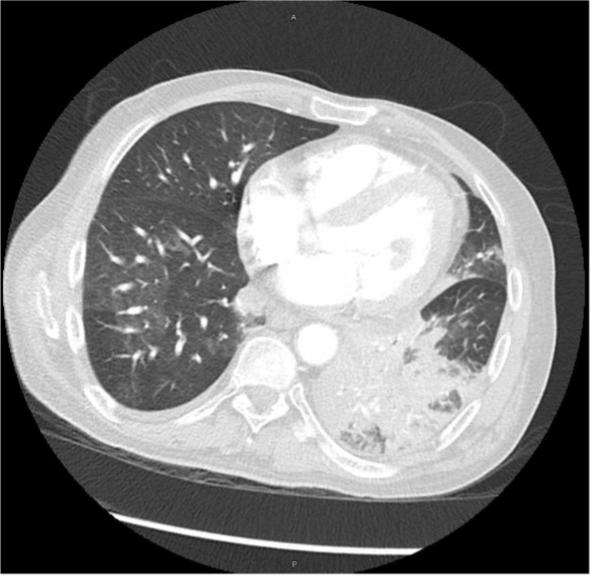Case Presentation: A 70-year-old man presented with acute on chronic cough, dyspnea, chills, and pleuritic chest pain. The patient had returned from Jerusalem four months prior, where he participated in multiple large religious gatherings. Since his travels, the patient also reported weight loss and decreased appetite, with months of cough and sneezing. Vitals included a maximum temperature of 100.7°C, pulses in the 90s, eupneic respirations, with the patient newly requiring 2L/min of oxygen. Labs demonstrated a white blood cell count of 8.8 x 10E9/L, with increased absolute neutrophils. Lactate was 1.8mmol/L. Venous blood gas and liver function tests were within normal limits. CT showed a left lung consolidation compatible with pneumonia.Work-up with a respiratory panel was negative for viral pathogens and atypical organisms like Chlamydia pneumoniae and Mycoplasma pneumoniae. Blood cultures were collected, while a sputum sample was not producible. The patient was admitted for acute hypoxemic respiratory failure secondary to pneumonia. We started the patient on 1 gram IV ceftriaxone every 24 hours, plus oral azithromycin 500 milligrams. Within one day of collection, blood cultures grew a gram-negative diplococci, and ceftriaxone was increased to 2 grams. On incubation day two, the organism was identified as non-groupable Neisseria meningitidis.The patient displayed mild photophobia during one visit, and on consecutive days, reported a headache. Repeat physical examination was negative for meningeal signs. On admission day four, the patient’s respiratory status improved, as he no longer required supplemental oxygen. A lumbar puncture confirming meningitis was not performed, as antibiotics were administered prior to clinical consideration. After completing a 7-day course of ceftriaxone and a 3-day course of azithromycin, the patient was discharged with recovered respiratory function and no clinical signs of meningitis.
Discussion: With vaccine use, meningococcal disease in the U.S has declined to 0.15 cases per 100,000. Primary pneumonia is estimated to occur in only 5 – 10% of meningococcal infections, with symptoms of fever and pleuritic chest pain occurring in greater than 50% of patients.Travel posed a significant risk to this patient, as carriage of invasive meningococcal genogroups is higher in Israel relative to other developed countries. Meningitis outbreaks are also tied to religious gatherings in North Africa and the Middle East. While the meningococcal vaccine is required for travel to Saudi Arabia during the Hajj, the CDC does not recommended it for travel to Israel. The patient had no history of meningococcal vaccination, predisposing him to this uncharacteristic infection. Therefore, this case may illustrate benefit of meningococcal vaccination prior to religious tourism in the Middle East. While primary prevention was missed, the positive outcome of this case was due to immediate collection of blood cultures when a source of infection was identified, regardless of minor signs of systemic inflammation. Further, the early use of broad-spectrum IV antibiotics provided adequate coverage for this rare instance of meningococcal pneumonia.
Conclusions: N. meningitidis primarily causes meningitis, but in the elderly, it can present with meningococcemia and meningococcal pneumonia. Unvaccinated individuals traveling to North Africa and the Middle East for religious expedition are at an increased risk of such meningococcal infections.

